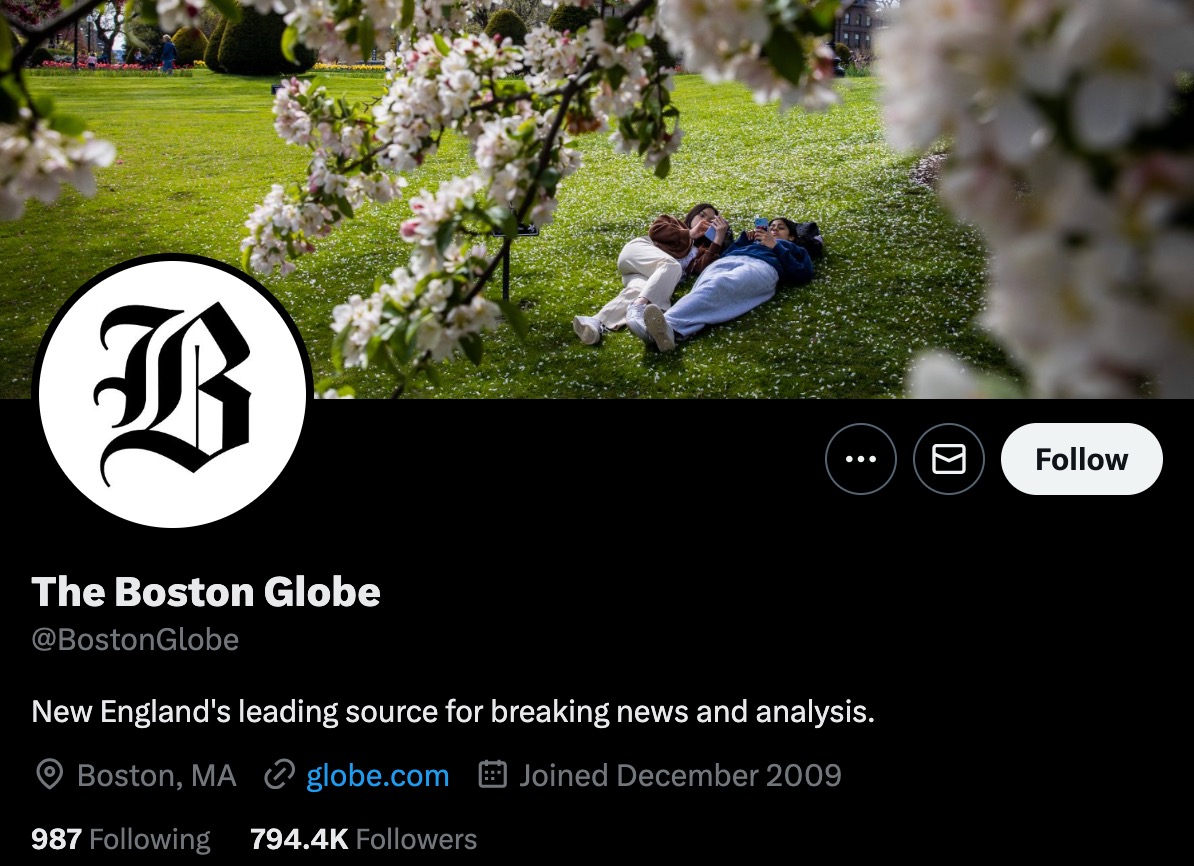How analytics are driving decisions at The Boston Globe
In the age of shrinking newsrooms and content powered by artificial intelligence, readership is vital to the livelihood of news media. For The Boston Globe, analytics play a key role in both driving new readership and retaining lifelong readers.
From immersive multimedia projects to curated content, the Globe uses a variety of tools to build a loyal readership, but it is all driven by one metric: reader analytics.
Storybench spoke with Jason Tuohey, the Globe’s managing editor of audience and new platforms, to discuss the impact of user analytics and the capabilities of new technologies in the newsroom. Tuohey visited Northeastern University’s School of Journalism on Oct. 12, 2023. The questions and answers below are also taken from the event.
The following interview has been edited for length and clarity.
How often do you look at metrics to make decisions?
Tuohey: Constantly. I could bring up something right now that shows exactly what people are reading and the numbers change second by second. We definitely look at that in terms of real-time programming to get a sense of what is on our site and what’s resonating with [subscribers]. I think the key is that you can’t just look at numbers. You have to understand the story that you’re telling them. I think you hit the short game, the long game. The short game just helps you be aware of what’s happening in the city and then the long game is where we can really delve into it and say, “Okay, there’s a lot of readership around weather, and if we double down on weather how would that look? How would we frame this?”
What strategies do you use to drive engagement?
A metric we look at is subscriber visits, like what the subscribers are reading in an effort to make sure that subscribers continue to re-up their subscription, that they find us valuable. But within that we have a lot of different initiatives. For some, it may be more community-based, around discussion. We built Facebook groups and things like that. Other times, it might be more breaking news or having really impactful, romantic journalism. It varies and you tailor it very specifically for the community you’re trying to reach.
What sorts of storytelling mediums are getting the most engagement?
Oddly, the article is still really powerful for us. I will say, nontraditional article types have a lot of potency as well. Live blogs are extremely effective for the fast-moving news story. If you put a traditional main bar out and a live blog that is just rapid-fire catching all the updates, the audience always goes to the live blog. I think that just speaks to what the article is like. It’s great, but it’s limited and it’s not the end all be all.
For projects, we’re really getting serious. We just pull out all the stops and we have these immersive multimedia experiences. When [digital storytelling] is at its best, it’s not video, it’s not coding, it’s not photography. It’s all these things wrapped into one.

What are you doing to engage with younger audiences?
I think a lot of newspapers, over the years, have made this sort of mistake of being like, “We’re going to create a young audience initiative.” That’s the last thing any reader wants to have, is just to be pandered to. I do believe that it’s an ongoing shift. I believe that it is bringing in people who represent younger generations and empowering them to tell stories through their own lenses and not being dictated by an editor’s [lens].
How do you see these metrics changing in another 10 to 15 years?
I think we’re leaving the era of the wide-open internet. In the 2010s, you had like five websites that everyone went to every day, right? It was Google, Amazon, Twitter, Facebook. Those are all sort of drying up for various reasons. What you’re entering now is a very closed network where you have self-selected communities erupting for a number of reasons. I think what you get there is that the scale is going to be much smaller. I think what you need to do is build those connections and build those segments of news and be very targeted in your approach.
How is the Globe preparing for artificial intelligence in the newsroom?
We’re starting small and easy. What we’re trying to do is figure out how to use it in a way that is really going to help us journalists. There’s a lot of potential there because there’s an inherent automation that can just take a lot of busy work off of somebody. If you’re writing headlines all day, it takes a lot of time and effort. You can ask the machine to spit out five potential headlines. It doesn’t mean you have to use them, but you’re at a starting point where you don’t have to make it up from scratch. It’s a really effective tool to sort of test just the flavor of play, which aspect of the story is resonating with readers, and we’ve built things like that and I envision us building out more tools like that to help journalists.
- How analytics are driving decisions at The Boston Globe - October 25, 2023





